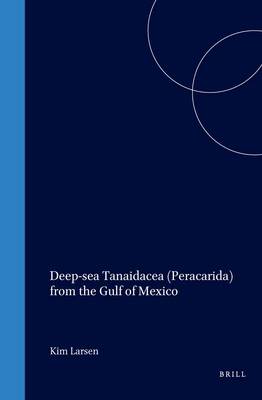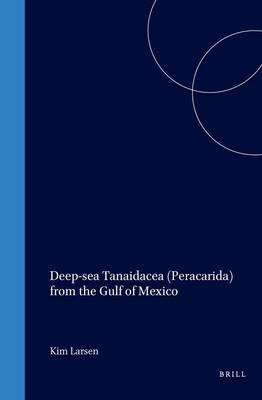
- Afhalen na 1 uur in een winkel met voorraad
- Gratis thuislevering in België vanaf € 30
- Ruim aanbod met 7 miljoen producten
- Afhalen na 1 uur in een winkel met voorraad
- Gratis thuislevering in België vanaf € 30
- Ruim aanbod met 7 miljoen producten
Zoeken
Omschrijving
This book deals with a large number of deep-sea taxa of Tanaidacea from the Gulf of Mexico, primarily collected during the Deep Gulf of Mexico Benthos Study and the North Gulf of Mexico Continental Shelf Study. Four new genera, Aramaturatanais, Caudalonga, Insociabilitanais, and Pseudoarthrura are described. Twenty-one new species belonging to those new genera and to Anarthruropsis, Araphura, Araphuroides, Chauliopleona, Filitanais, Leptognathia, Leptognathiella, Leviapseudes, Meromonakantha, Paragathotanais, Paranarthrura, Robustochelia, and Stenotanais are described as well, in many cases by both sexes. The female of Paragathotanais typicus and the male Pectinapseudes magnus are described herein for the first time. The genus Crurispina is renamed Spinitanaopsis as its original name was found to be preoccupied.
Keys are presented for the genera Atlantapseudes, Pectinapseudes, Sphyrapoides, Kudinopasternakia, Paragathotanais, Paranarthrura, Anarthruropsis, Filitanais, Leptognathiella, Mesotanais, Araphura, Araphuroides, Robustochelia, and Stenotanais.
Information about distribution and bathymetric range is included. Also, global distribution patterns and dispersal mechanisms applying to the Tanaidacea are discussed. Most deep-sea species appear to be widely distributed and show remarkably wide depth ranges. Misidentification is suggested as the cause of many of those apparently widely distributed tanaidaceans. Wide bathymetric ranges have been recorded for many species, and their apparent pressure tolerance may contribute to facilitating dispersal. The known distribution patterns in the Gulf of Mexico seem merely to reflect sampling effort.
In addition to the specific parts, this text gives a review of tanaidacean morphology, anatomy, physiology, ecology, development, reproduction, behaviour, and of other aspects of their biology.
Keys are presented for the genera Atlantapseudes, Pectinapseudes, Sphyrapoides, Kudinopasternakia, Paragathotanais, Paranarthrura, Anarthruropsis, Filitanais, Leptognathiella, Mesotanais, Araphura, Araphuroides, Robustochelia, and Stenotanais.
Information about distribution and bathymetric range is included. Also, global distribution patterns and dispersal mechanisms applying to the Tanaidacea are discussed. Most deep-sea species appear to be widely distributed and show remarkably wide depth ranges. Misidentification is suggested as the cause of many of those apparently widely distributed tanaidaceans. Wide bathymetric ranges have been recorded for many species, and their apparent pressure tolerance may contribute to facilitating dispersal. The known distribution patterns in the Gulf of Mexico seem merely to reflect sampling effort.
In addition to the specific parts, this text gives a review of tanaidacean morphology, anatomy, physiology, ecology, development, reproduction, behaviour, and of other aspects of their biology.
Specificaties
Betrokkenen
- Auteur(s):
- Uitgeverij:
Inhoud
- Aantal bladzijden:
- 382
- Taal:
- Engels
- Reeks:
- Reeksnummer:
- nr. 5
Eigenschappen
- Productcode (EAN):
- 9789004142107
- Verschijningsdatum:
- 12/12/2005
- Uitvoering:
- Hardcover
- Formaat:
- Genaaid
- Gewicht:
- 754 g

Alleen bij Standaard Boekhandel
+ 512 punten op je klantenkaart van Standaard Boekhandel
Beoordelingen
We publiceren alleen reviews die voldoen aan de voorwaarden voor reviews. Bekijk onze voorwaarden voor reviews.








